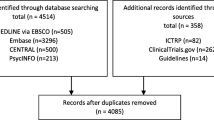Abstract
The assessment of change in analysis of visual fields is one of the most difficult tasks in automated perimetry. A new, computerized method shows the original fields and the topographic trends in one easy graphic display. This new way of analysis the ‘GATT’ superimposes the grayscale maps of two fields with a simple logic, producing the following patterns: all stable, unchanged areas are displayed normally; in changed areas, the grayscale of the first and the second field are mixed in the form of stripes. The contrast between the stripes indicates the amount of change. The orientation of the stripes depends on the direction of change: horizontal stripes mean deterioration, vertical stripes mean improvement. The GATT is also able to compare 4 fields, using the same patterns. In addition, a scatterboard without stripes indicates areas of high fluctuation, but without a significant change in the course of the 4 fields. The GATT enables a quick, quantitative judgement of the trends of visual fields.
Similar content being viewed by others
Abbreviations
- GATT:
-
Graphical Analysis of Topographical Trends
References
Bebie H, Fankhauser F. Ein statistisches Programm zur Beurteilung von Gesichtsfeldern. Klin Mbl Augenheilk 1980; 177: 417–22.
De Natale R, Glaab-Schrems E, Krieglstein GK. The prognosis of glaucoma investigated with computerized perimetry. Doc Ophthalmol 1984; 58: 385–92.
Gloor B, Schmied U, Fässler A. Changes of glaucomatous field defects: Analysis of Octopus fields with programm Delta. In: Greve EL, Verriest G, eds. Fourth International Visual Field Symposium, Bristol 1980. Den Haag: Dr. Junk, 1981: 11–5.
Gloor B, Vökt B. Long-term fluctuation versus actual field loss in glaucoma patients. Dev Ophthalmol, Vol. 12. Basel: Karger, 1985: 48–69.
Gramer E, Althaus G. Quantification and progression of the visual field defect in glaucoma without hypertension, glaucoma simplex and pigmentary glaucom. A clinical study with the Delta program of the 201 Octopus perimeter. Klin Monatsbl Augenheilk 1987; 191: 184–98.
Grehn F, Burkhard G. Verfahren zur quantitativen Verlaufskontrolle computerperimetrischer Befunde beim Glaukom. Klin Mbl Augenheilk 1988; 193: 493–8.
Heijl A. A simple routine for demonstrating increased threshold scatter by comparing stored computer fields. In: Heijl A, Greve EL, eds. Sixth International Visual Field Symposium, Santa Margherita Ligure, 1984. Dordrecht: Dr. Junk, 1985: 35–8.
Heijl A, Lindgren G, Olsson J. A package for the statistical analysis of computerized fields. In: Greve EL, Heijl A, eds. Seventh International Visual Field Symposium, Amsterdam 1986. Dordrecht: Nijhoff/Dr. Junk, 1987: 153–68.
Weber J. Verfahren zur Erzeugung eines die Unterschiede zwischen zwei einander zugeordneten Bildern verdeutlichenden dritten Bildes. München: Deutsches Patentamt, 1989: Patent Application No. P 39 05 234.6.
Author information
Authors and Affiliations
Rights and permissions
About this article
Cite this article
Weber, J., Krieglstein, G.K. Graphical Analysis of Topographical Trends (GATT) in automated perimetry. Int Ophthalmol 13, 351–356 (1989). https://doi.org/10.1007/BF02279872
Accepted:
Issue Date:
DOI: https://doi.org/10.1007/BF02279872




